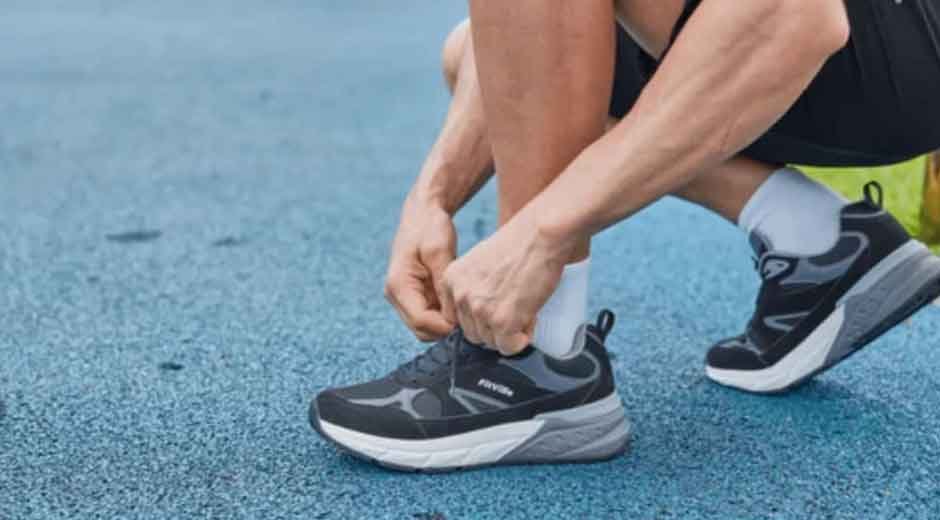Ever felt like you were forcing your feet into shoes made for someone else entirely? You’re not alone. A huge number of people wear shoes that are too narrow, just because that’s what’s available. But choosing wide shoes isn’t only about comfort. It’s about supporting your feet properly, avoiding long-term issues, and feeling good all day.
The problem is, shopping for wide shoes can be frustrating. The labels aren’t always clear, sizing varies wildly, and sometimes a shoe that says “wide” still feels far too tight.
Here’s what you really need to know to make the right choice.
What Makes a Shoe “Wide” Anyway?
Shoe width is measured differently depending on the brand or region, but in general, it refers to the space across the ball of the foot. It’s not just about making the whole shoe bigger. A properly designed wide shoe will be roomier across the toe box and sometimes deeper through the upper, to give your foot more space to spread naturally.
You might see labels like:
- W or D– Standard width (for women, D is often wide)
- 2E, 4E, 6E– Wide to extra-wide sizes
- E, EE– Indicates increasing levels of width
The key is not to rely on letters alone. One brand’s 2E might feel totally different from another’s.
Why Width Matters More Than You Think
Wearing narrow shoes can cause more than just discomfort. Over time, squeezing into tight footwear can lead to serious issues.
Here are a few examples:
- Blisters and calluses– Constant rubbing leads to friction-based skin problems
- Bunions and hammertoes– The shape of your foot changes when it’s regularly compressed
- Reduced circulation– Tight shoes can restrict blood flow, especially for people who are on their feet for hours
- Pain in knees and back– Poor alignment from ill-fitting shoes can throw off your posture
Even if you can technically get your feet into standard-width shoes, that doesn’t mean they fit well. A shoe should work with your foot shape, not against it.
Signs You Need Wide Shoes
Some people are born with wider feet. Others develop them over time due to changes like pregnancy, weight gain, ageing, or certain medical conditions.
Look out for these signs:
- Your toes feel squashed, even in your usual size
- The sides of your feet bulge out of your shoes
- You get blisters around your little toes or the ball of your foot
- Your shoes wear out unevenly or too quickly
- You dread wearing closed-toe shoes for long periods
If any of this sounds familiar, you’re probably better off switching to shoes from Wide Shoes instead of just sizing up. You’ll be surprised by the difference this can make!
How to Get the Fit Right
Trying on shoes in person is ideal, but not always possible. If you’re buying online or just want to be more confident next time you shop, here’s what to keep in mind.
Measure Both Feet
Feet aren’t always the same size, and width can vary from left to right. Measure both feet at the end of the day, when your feet are at their largest, and go with the bigger measurement.
Check the Toe Box
A good wide shoe should let your toes lie flat and spread slightly when you walk. You shouldn’t feel any pinching or pressure on the sides. If you can wiggle your toes easily, that’s a good start.
Consider the Shape of the Upper
Not all wide shoes are built the same. Some are simply wider in the sole, while others add space through the upper material too. Look for styles that accommodate the instep and forefoot, not just the sole width.
Think About Materials
Stiff, unforgiving materials will always feel tighter than softer ones. Leather, mesh and fabrics with some stretch will mould better to the shape of your foot over time, especially for wide or irregularly shaped feet.
When Sizing Up Isn’t the Solution
A lot of people try to solve width problems by going up a shoe size. It’s a tempting quick fix, but not the right approach. A longer shoe won’t give your toes more side room, and it can throw off the way your foot sits in the shoe.
Here’s why that matters:
- Your heel may slip, leading to blisters
- Arch support won’t line up with your foot properly
- You’ll end up dragging your feet slightly, causing fatigue
It’s always better to look for the right width than to guess with a bigger size.
Things to Look for in a Good Wide Shoe
A well-designed wide shoe isn’t just a bigger version of the standard model. It should offer balanced proportions, proper support, and a thoughtful shape.
Here’s what to prioritise:
- Wide toe box– So your toes aren’t crammed together
- Good arch support– To keep your foot stable and aligned
- Adjustable features– Laces, straps or Velcro can help you fine-tune the fit
- Cushioned midsole– For shock absorption and everyday comfort
- Secure heel– To stop your foot slipping as you move
Don’t Forget Function and Style
You shouldn’t have to sacrifice how a shoe looks just to get something that fits. Thankfully, wide shoes now come in far more styles than they used to. Whether you need something casual, formal or athletic, the variety has improved massively over the last few years.
A practical tip is to focus on neutral colours and classic shapes, especially if you’re only buying one or two pairs. That way, they’ll go with more of your wardrobe and give you better value.
Watch Out for These Mistakes
Even if you know you need wide shoes, it’s easy to get tripped up by a few common errors. Here’s what to avoid:
- Assuming all wide shoes are the same– Try different fits and cuts
- Skipping the break-in period– Even wide shoes need a bit of time to mould to your foot
- Ignoring your socks– Thicker socks can affect fit, so always try on with the socks you’ll actually wear
- Forgetting about swelling– Feet can swell during the day, especially in hot weather or after long periods of standing
The Bottom Line on Comfortable Width
Finding shoes that genuinely fit wide feet is not just a luxury. It’s essential for daily comfort, long-term foot health, and reducing unnecessary pain or stress. Instead of settling for something that just “kind of” fits, take the time to find what actually works for your foot shape.
Your feet support you every day. The least you can do is return the favour.










